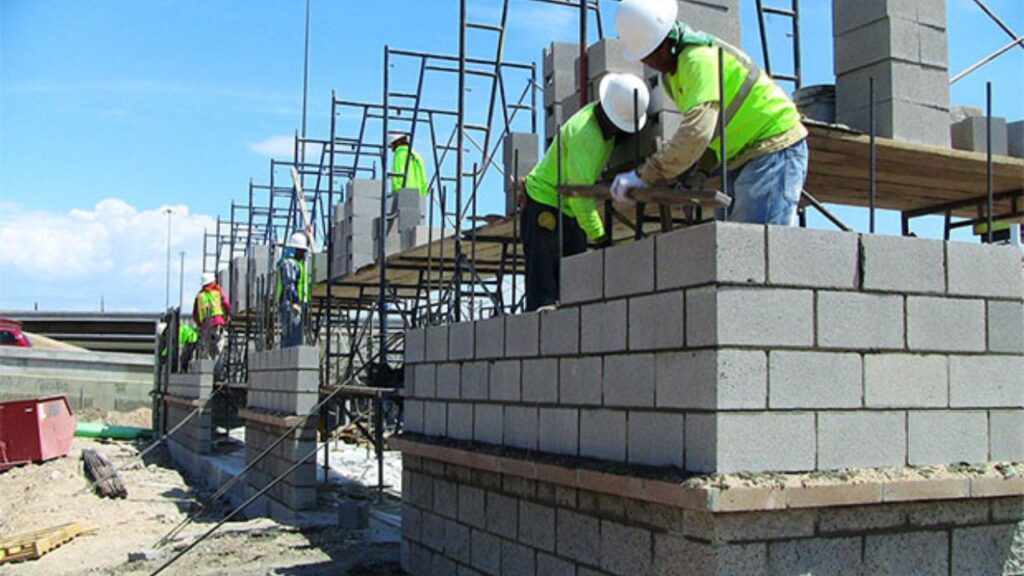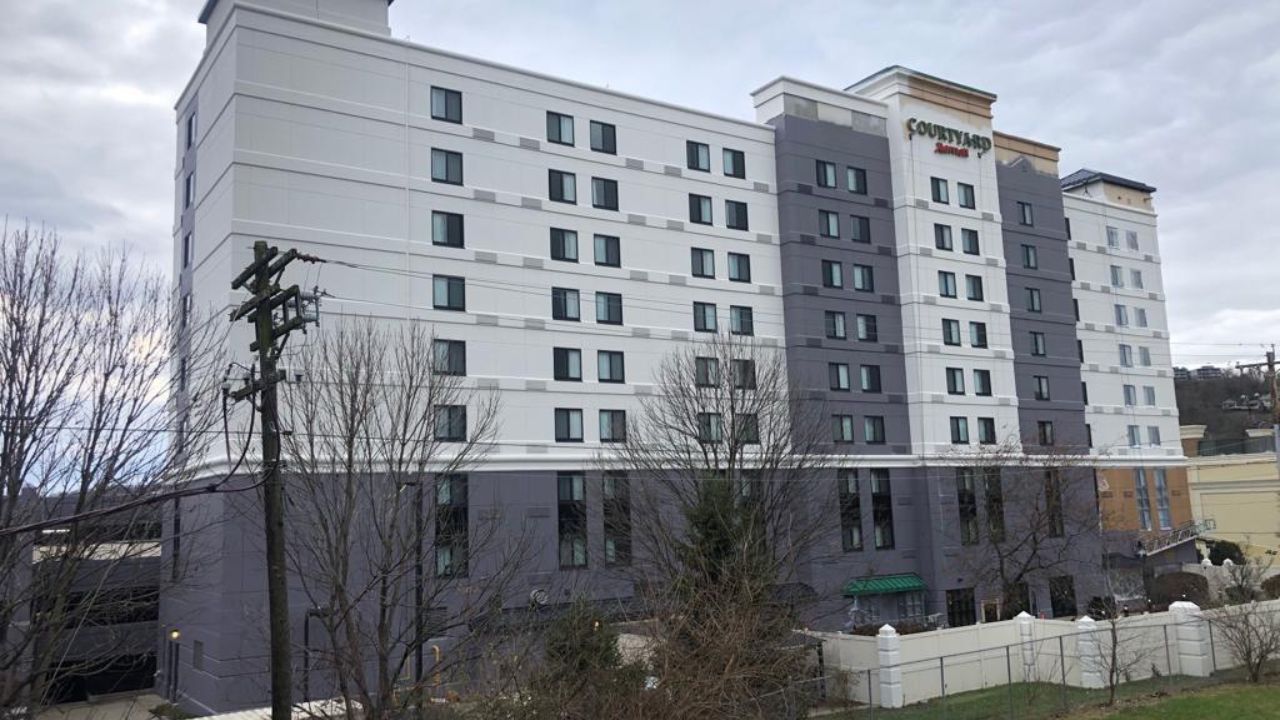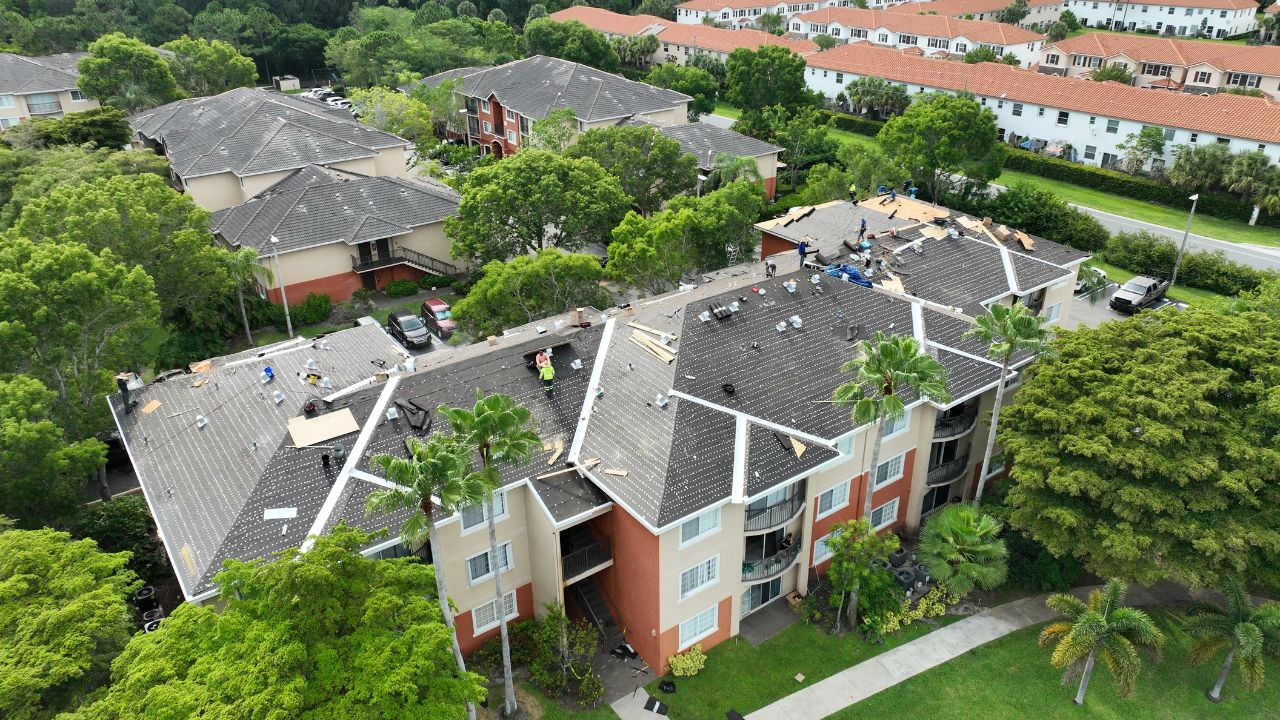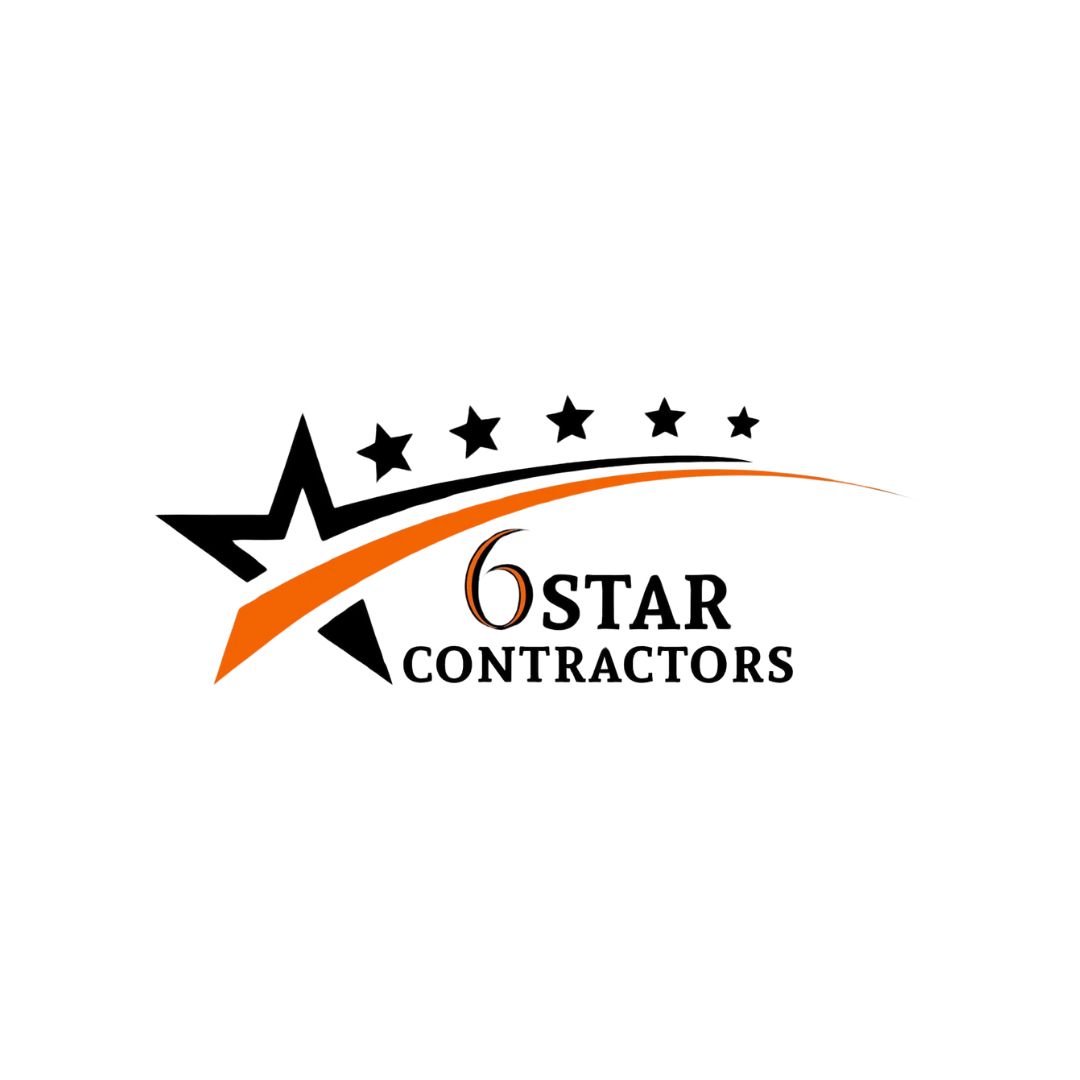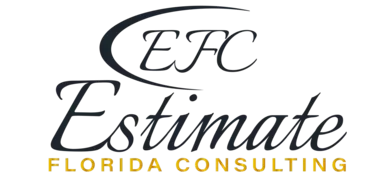Securing a bank loan for a construction project can be a complex process, but having a detailed and accurate building cost estimate simplifies the procedure and increases your chances of approval. This blog provides essential insights for contractors, subcontractors, homeowners, and other stakeholders in Florida on how to create a comprehensive cost estimate to support financing. A well-prepared cost estimate not only helps secure funding but also establishes a clear financial roadmap for your project, ensuring smoother execution from start to finish. With a focus on accuracy and local relevance, a proper estimate enhances transparency and ensures lender confidence.

Why a Detailed Building Cost Estimate Matters?
A building cost estimate is more than just a list of expenses; it’s a critical document that outlines the financial requirements of your project. Banks and financial institutions rely on these estimates to evaluate the feasibility of your construction project and assess their lending risk. Providing clear, accurate, and detailed information demonstrates your project’s viability and professionalism. Additionally, a comprehensive estimate ensures that all parties involved—from contractors to lenders—are on the same page, reducing the likelihood of misunderstandings or disputes. This clarity minimizes risks for lenders while helping contractors anticipate potential challenges.
Understanding the Role of Cost Estimation in Loan Approval
When applying for a bank loan, the financial institution requires evidence that your project is viable and profitable. A cost estimate bridges this gap by presenting a clear picture of your financial needs and resource allocation. With an accurate estimate, you can:
- Demonstrate the total investment required for project completion, including hidden costs such as taxes, transportation, and contingency expenses.
- Show a detailed breakdown of costs for transparency and better accountability, making it easier for banks to understand the allocation of resources.
- Highlight contingency plans for managing unexpected expenses, showcasing effective risk management strategies and lender preparedness.
Banks often scrutinize estimates for feasibility, clarity, and documentation. Providing a detailed and professional cost estimate can make the difference between loan approval and rejection, highlighting the importance of engaging with experienced estimation services.
How to Calculate Building Costs for a Bank Loan
Research Current Market Trends
- Investigate current material prices, labor rates, and other regional expenses specific to Florida. Regularly updated databases and local construction reports can provide valuable insights.
- Use tools like construction cost calculators or consulting services for precise cost predictions tailored to your location.
- Account for seasonal fluctuations in Florida, such as peak construction periods or weather-related delays impacting material and labor costs.
Define Project Scope
- Clearly outline the project’s size, specifications, and expected outcomes. This includes architectural plans, material choices, and construction phases.
- Specify whether the project is residential or commercial, as this affects both material and labor costs. Residential projects often require customized finishes, while commercial projects prioritize durability and functionality.
Estimate Material and Labor Costs
- Break down costs into categories such as structural components, finishes, and landscaping. Include details on specific materials like energy-efficient insulation or hurricane-resistant windows, which are relevant for Florida.
- Account for both skilled and unskilled labor expenses, factoring in local market rates and availability. For instance, urban areas may have higher labor rates compared to rural locations.
Key Components of a Building Cost Estimate
When preparing a building cost estimate for a bank loan, focus on these critical components:
Site Preparation Costs
- Land clearing, excavation, and grading ensure the site is ready for construction. Include any costs related to debris removal and erosion control.
- Soil testing and environmental studies validate the suitability of the land for building, ensuring compliance with local regulations. These steps help mitigate risks related to unstable soil or environmental hazards.

Material Costs
- Include all structural materials such as roofing, flooring, drywall, and concrete. Specify material grades and sources to add credibility and demonstrate quality assurance.
- Add detailed costs for finishes, fixtures, and custom features tailored to your project’s requirements and design standards. This level of detail ensures lenders see value in the investment.
Labor Costs
- Consider the wages of skilled and unskilled laborers based on local rates, including overtime and holiday pay if applicable. Highlight any specialty labor requirements for unique construction features.
- Factor in subcontractor fees for specialized tasks like plumbing, electrical installations, and HVAC systems. Provide quotes or contracts to validate these costs.
Mechanical, Electrical, and Plumbing (MEP) Costs
- HVAC installation for heating, cooling, and ventilation, including ductwork and energy-efficient systems. Highlight energy compliance certifications where applicable.
- Electrical systems, including wiring, lighting, and power panels, with an emphasis on smart home technology and renewable energy integration.
- Plumbing systems, fixtures, and drainage networks, accounting for water-saving technologies and compliance with Florida codes. Include provisions for advanced systems like tankless water heaters or rainwater harvesting.
Permits and Fees
- Account for costs related to building permits, environmental compliance, and inspections. Include timelines for obtaining necessary approvals to avoid project delays.
- Highlight any municipality or state-specific fees relevant to Florida projects, such as impact fees for infrastructure development.
Contingency Budget
- Reserve 10-15% of the total estimated cost for unforeseen expenses, such as material price increases or weather-related delays.
- This buffer ensures the project timeline remains intact and demonstrates preparedness to lenders. Lenders are often reassured by visible contingency planning.
Overhead and Profit
- Factor in administrative expenses like office supplies, insurance, and utilities, ensuring these are clearly itemized. Include costs for project management software or tools if applicable.
- Include a reasonable profit margin, which not only covers business sustainability but also showcases the financial health of your project. This ensures lenders that the project is viable and well-planned.
Build your dream project with ease—contact Estimate Florida Consulting today!
Tips for Creating an Accurate Cost Estimate
Use Local Data
- Base your cost estimates on local Florida pricing for materials, labor, and permits, as these can vary significantly by region. Ensure you stay updated on seasonal price fluctuations and trends.
- Collaborate with local suppliers and contractors for the most accurate pricing data. Suppliers often offer insights on bulk discounts or alternative materials.
Break Down Costs by Category
- Provide a clear and comprehensive breakdown of each cost category to make the estimate easy to understand for lenders. This demonstrates transparency and professionalism.
- Use cost tables, charts, and visuals for quick reference and better comprehension by all stakeholders.
Include Supporting Documentation
- Attach detailed quotes from suppliers, labor contracts, and permit records to substantiate your estimates.
- Supplement your estimate with project timelines, architectural plans, and resource allocation details to give lenders a complete overview.
Adopt a Professional Format
- Use a polished and professional layout, complete with a cover page, table of contents, and clearly labeled sections.
- Incorporate headings, subheadings, and bullet points for better readability and quick navigation. Professional formatting reflects attention to detail and builds trust.
Get Acquainted with Estimation
Top 5 Cost-Effective Tips to Manage Construction Budgets!!
Construction Projects Going Over Budget? Here's How to RECOVER!
Presenting Your Estimate to the Bank
When submitting your estimate as part of your loan application, ensure it aligns with the following:
- Clarity and Transparency: Avoid ambiguous terms or lumped costs. Provide detailed descriptions for each line item.
- Professional Presentation: Use a clean and organized format, including an executive summary highlighting the project’s scope and financial needs.
- Feasibility: Demonstrate how the estimated costs align with your project timeline and scope, highlighting how potential risks will be managed. Offer contingency strategies as reassurance for lenders.
Additional Considerations for Florida Projects
Florida construction projects come with unique considerations, such as:
- Hurricane Preparedness: Ensure the estimate includes costs for impact-resistant materials, reinforced roofing, and other storm-resistant features. Lenders are likely to assess whether your project complies with Florida’s stringent building codes.
- Energy Efficiency: Factor in costs for energy-saving solutions, such as solar panels, LED lighting, and efficient insulation systems. Highlight tax incentives or rebates for energy-efficient installations.
Environmental Compliance: Include costs for environmental impact assessments, green certifications, and mitigation plans to meet Florida’s stringent ecological standar
Download Template For Construction Project Breakdown
- Materials list updated to the zip code
- Fast delivery
- Data base of general contractors and sub-contractors
- Local estimators
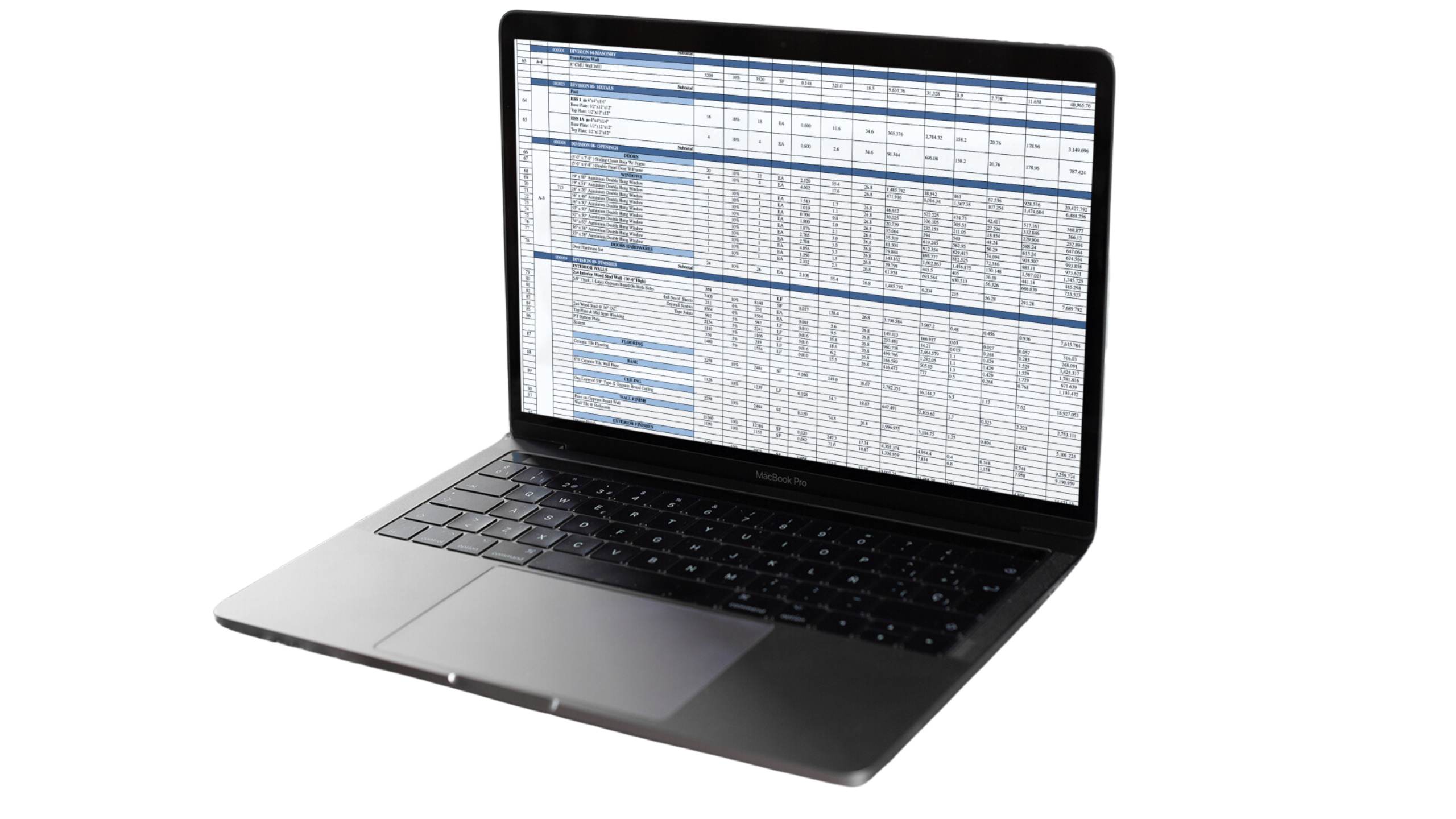
Frequently Asked Question
It ensures the project stays on track financially despite unexpected expenses.
Banks assess the clarity, feasibility, and supporting documentation of the estimate to gauge project viability.
Yes, estimates can be revised with proper justification and bank approval.
Professionals provide precise, well-organized estimates tailored to lender requirements. They understand local regulations, material costs, and labor rates, ensuring your estimate is accurate, credible, and aligned with project goals.
Comprehensive Trade-Specific Estimates
At Estimate Florida Consulting, we offer detailed cost estimates across all major trades, ensuring no part of your project is overlooked. From the foundation to the finishing touches, our trade-specific estimates provide you with a complete and accurate breakdown of costs for any type of construction project.

Testimonials
What Our Clients Say
We take pride in delivering accurate, timely, and reliable estimates that help contractors and builders win more projects. Our clients consistently praise our attention to detail, fast turnaround times, and the positive impact our estimates have on their businesses.
Estimate Florida Consulting has helped us win more bids with their fast and accurate estimates. We trust them for every project!

Steps to Follow
Our Simple Process to Get Your Estimate
01
Upload Plans
Submit your project plans, blueprints, or relevant documents through our online form or via email.
02
Receive Quotation
We’ll review your project details and send you a quote based on your scope and requirements.
03
Confirmation
Confirm the details and finalize any adjustments to ensure the estimate meets your project needs.
04
Get Estimate
Receive your detailed, trade-specific estimate within 1-2 business days, ready for your project execution.





